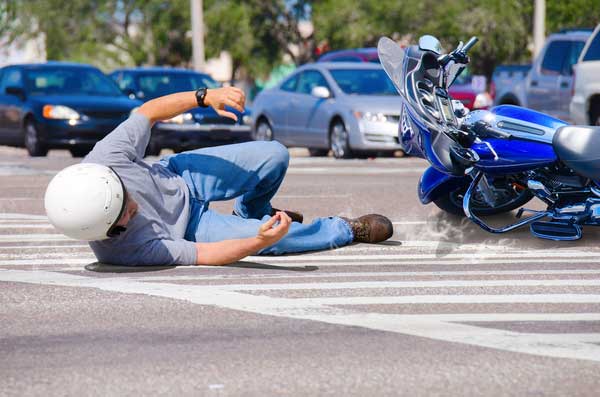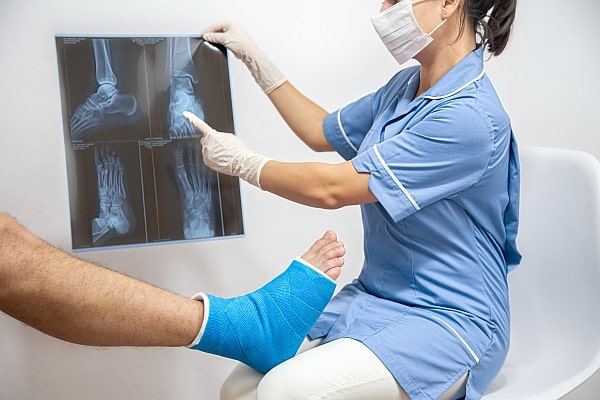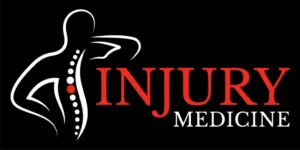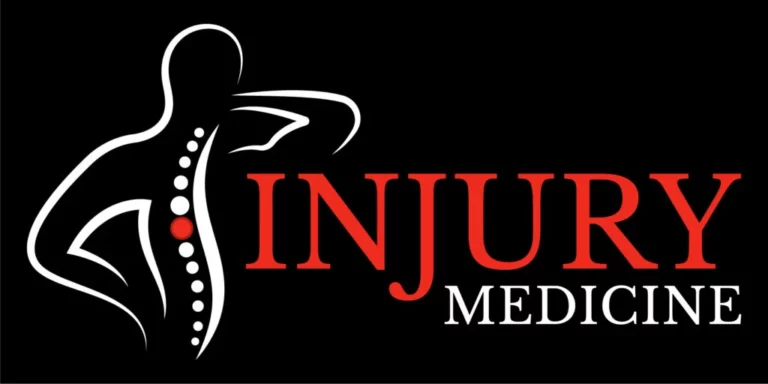Shockwave therapy is a non-invasive medical treatment that uses high-energy sound waves to promote healing and regeneration in injured tissues. First developed in the 1980s to shatter kidney stones, it has since been adapted for use in orthopedics, sports medicine, pain alleviation for accident-related injuries, and so on.
It is an effective treatment that has a high success rate and a relatively short treatment time.
If you’re in Anderson, South Carolina, suffering from an injury or chronic pain, consider visiting our Anderson injury center to learn more about your treatment options.
Let’s first explore what shockwave therapy is, when it is needed, and how it works.
When Is Shockwave Therapy Used?
Shockwave therapy may be needed when other treatments have not successfully relieved pain or promoted healing in certain musculoskeletal conditions. It is often recommended after regular treatment, such as physical therapy and medication, has been tried without success.
Shockwave therapy may be used to treat a range of musculoskeletal conditions, including:
- Plantar fasciitis
- Achilles tendonitis
- Tennis elbow
- Rotator cuff tendonitis
- Patellar tendinitis
- Hip bursitis
- Stress fractures
It is important to note that shockwave therapy may not be suitable for everyone. Only after a thorough evaluation from a healthcare professional can you know for sure if it will be an appropriate treatment option.
Additionally, some people may experience discomfort during treatment, and there may be contraindications, such as pregnancy or blood-thinning medication.
How Does Shockwave Therapy Work?
Shockwave therapy works through two primary mechanisms.
- Mechanical effects: Small vibrations and pressure changes in the tissue stimulate cellular responses and promote healing.
- Biological effects: The shockwaves also trigger the release of growth factors and other substances that promote tissue regeneration and repair.
Types of Shockwave Therapy
There are two main types of shockwave therapy: focused and radial.
- Focused shockwave therapy uses a concentrated beam of sound waves to target a specific area.
- Radial shockwave therapy uses a more diffused energy pattern to treat a wider area.
Procedure
The shockwave therapy procedure involves using a handheld device that delivers the sound waves to the affected area. Patients may experience some discomfort during treatment, but it typically lasts for only a few minutes and does not require anesthesia.
What Happens During a Shockwave Therapy Session?
The patient is first positioned comfortably, and a gel is applied to the target area.
After this, the therapist uses a handheld device to deliver high-energy sound waves to the affected area. These sound waves stimulate the body’s healing response by increasing blood flow, promoting tissue repair, and reducing inflammation.
The treatment session typically lasts between 10 and 30 minutes, depending on the injury’s severity and the treatment area’s size. Most patients require multiple sessions spaced out over several weeks to achieve optimal results.
The treatment is generally well-tolerated, although some patients may experience mild discomfort or pain during the session.
Patients are advised to rest afterward and avoid strenuous activities for a few days to allow the body to heal. The full benefits of shockwave therapy may take several weeks to become apparent, as the body’s natural healing processes take time to repair the affected tissue.
Overall, shockwave therapy is considered a safe and effective treatment option for many musculoskeletal injuries.
After the Shockwave Therapy
After the session, patients may experience mild discomfort or soreness in the treated area. This is normal and typically resolves within a few days. The therapist may recommend over-the-counter pain relievers or ice packs to help manage pain or swelling.
Patients must also avoid strenuous activities for a few days after the treatment to allow the body to heal. The therapist may recommend specific exercises or stretches to promote healing and improve mobility in the affected area.
It’s important to follow the therapist’s post-treatment instructions to ensure the best possible outcomes. As instructed, you must also avoid certain medications or supplements that can interfere with the body’s natural healing processes, such as non-steroidal anti-inflammatory drugs (NSAIDs) or blood thinners.
After the completion of the treatment plan, patients have generally reported very positive results regarding pain relief and alleviation of musculoskeletal discomfort.
Keep in Touch With Your Therapist
Patients must stay in touch with their therapist after their shockwave therapy session. This way, they can discuss any changes in the symptoms, and make sure that any new pain or discomfort is promptly addressed and treated.
If a patient experiences any unusual or severe symptoms after shockwave therapy, such as increased pain, swelling, or redness, they should immediately contact their therapist. These symptoms could indicate a more serious complication, such as an infection or nerve damage, and require prompt medical attention.
By keeping in touch with their therapist and reporting their condition, patients can ensure the best outcome from their treatment and minimize the risk of complications. The therapist can also monitor the patient’s progress and make any necessary adjustments to the treatment plan.
Get the Help You Need From Our Anderson, South Carolina Injury Center
Shockwave therapy may be an effective treatment option if you’re looking for help with a musculoskeletal injury. Injury Medicine offers comprehensive treatment options for accident-related injuries and pain. We have several locations in South Carolina.
The first step is to schedule a consultation with an experienced medical professional from our Anderson, South Carolina injury clinic. We’ll discuss your symptoms, medical history, and any previous treatments you’ve tried.
Next, we’ll perform a physical examination to assess the extent of your injury and determine if shockwave therapy is an appropriate treatment option for you.
If shockwave therapy turns out to be a good option for you, we’ll develop a personalized treatment plan, based on your condition. This plan may include a series of shockwave therapy sessions and other treatments such as physical therapy, chiropractic care, or pain management, depending on your specific needs.
If the pain does not go away after an accident, don’t despair. Instead, reach out to us and start exploring treatment options. Contact us today to schedule a consultation!





